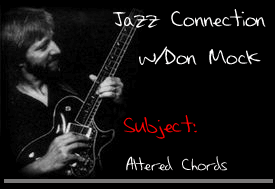
Don Mock:
here's Michael and I on a sunny day in Seattle,
listen to the demo first and then we'll get goin'
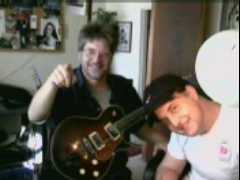
Don Mock:
For rock, blues and country guitar players, altered chords can be an
intimidating topic. We've all seen those huge chord books packed with
thousands of chords, many which have long scary names. It seems an
impossible task to to learn even a small percentage of them.
If you have one of those dreaded books, BURN IT. They often show
hundreds of "possible chords" many of which are useless in everyday
playing.
AScriabin:
yeah, really don. I've seen a book "6500 guitar chords"!
Don Mock:
And the worst thing about many of those books is that the exact
same chord voicing is shown over and over, just in different keys!
Stupid for an instrument that works like a slide-rule. Learn to write
your own chord book.
Tonight I'll show you an easy system for playing and using altered
chords. In many cases, you do not have to memorize a bunch of them, you
will simply create them right on the spot as needed.
Tom:
Really like those walking bass lines the last few days
Don Mock:
these chords will help with the walking bass lines,
Altered chords may not be common place in a lot of rock music, but I
know several fine rock guitarists that are very glad they know them, and
have found ways to apply them.
In blues, altered chords are called for
in many situations. And in today's pop/country music, altered sounds
show up all the time.
irene:
what kind of guitar are you using in the pic.
Don Mock:
it's a Fender/Stevens LP serial #1
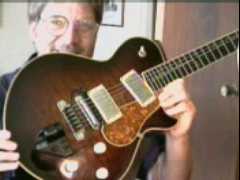
Tom:
what is the black thing under the bridge
Don Mock:
it's a Roland GK-2a,
First, what is an altered chord? From now on we will refer to them as
"altered dominant 7th" chords because in most cases they are dominant.
Chords such as major 7th's and minor 7th's can always be "extended"
(adding the 9th, 11th, and 13th) but not usually altered. Dominants, on
the other hand can have both, extensions and alterations.
Ras-mel:
alt dom b5 b7 b9 +5+9
Don Mock:
IMPORTANT: There are only 2 notes which can be altered in a dom7th. The
5th, and the 9th. Altered means to sharp (raise 1/2 step) and flat
(lower 1/2 step.
Altered dom7th's can have one or as many as four altered tones which are
used to create tension. Most altered 7th guitar voicings have only one
or two altered pitches,
I'm going to show you two master positions for instantly building
altered dominant 7th's.
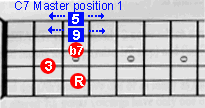
Don Mock:
All you have to do is memorize the three-note
7th voicing in each position, You then will learn where the 5th and the
9th are located, That's it.
Then, you simply follow the directions the chord symbol tells you. For
example, C7b9#5. You will first play the three-note C7, locate the 9th
and lower it 1/2 step. Then locate the 5th and raise it 1/2 step. Done.
I play this chord every day, yet I don't have it memorized. How? read
on....
Don Mock:
It has the root C on the 5th string. The the 3rd degree (E) on the 2nd
fret 4th string and the b7th (Bb) on the 3rd fret 3rd string. It does
not have a 5th degree which is very common for chord voicings.
This is a powerful little chord. I use it as is all the time.
Notice where the 9th is. On the B string 3rd fret. If you add it to our
little C7 you will have C9, an extended C7 (not altered). The 5th lives
on top on the 1st string 3rd fret. If you add it, nothing changes, you
only replace the omitted 5th to the C7 or C9.
Now let's play some altered dom7th chords. Play C7b9. Play the
three-note C7 and add the b9. Lower the D note (9th) to Db.
Don Mock:
here's me playing the C7b9

Ras-mel:
R 3 b7 b9?
Don Mock:
yes Ras,
I'll keep resending the diagram so you can see the basic pattern

Don Mock:
does everyone understand the master position graphic?
the red dots are the basic C7...
the blue squares are the 9th and 5th
Tom:
what finger do you use for the b9
Don Mock:
Tom, 1st finger,
let's play C7#9 now
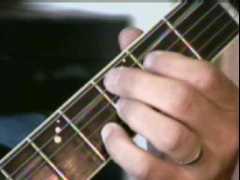
LarryWjazz:
Almost like a Ab13
Ras-mel:
r 3 b7 #9
Tom:
the b9 sounds like it leads in to the root c
Ras-mel:
F313-9 tritone
Don Mock:
how about C7#9#5,
here's me playing it
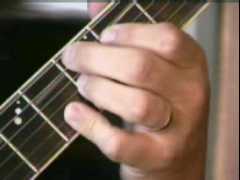
Don Mock:
first let's play C7b9#5
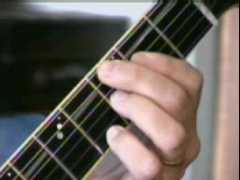
Ras-mel:
r 3 b7 b9 #5
Smitty:
do you bar across 2nd fret for that??
Don Mock:
Ras, yes...
Smitty, yes
Don Mock:
Let's now play a combination of an extended AND altered dom7th. Play
C9#5 followed by C9b5. Play C9#5 followed by C9b5
Bobby:
C79#5?
Don Mock:
take another look at the master position
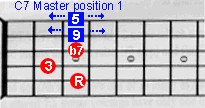
LarryWjazz:
Usually resolves to Fmajor 7
Don Mock:
the point is to build them on the spot
Ras-mel:
e Bbd g# g#to f#
Don Mock:
it's a technique that all jazz guitarist use,
here's me playing C9#5
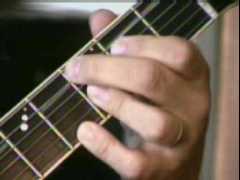
Don Mock:
can you play C13b9 in this position?I can, here it is
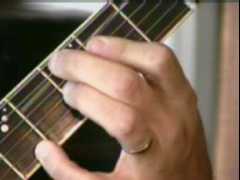
Ras-mel:
are you using your thumb to get the C note in the C9-5?
Don Mock:
Ras,no,
my fingers are, 2, 1, 3, 4, 1
LarryWjazz:
Almost like a Gminor 9
or a BbMaj7
Don Mock:
here's the tab for C9b5
Don Mock:
There are a few more possible combinations in this master position.
You'll probably run into some fingering problems to play some of them.
It's OK to omit some notes if you don't have enough fingers.
Ras-mel:
does the 3 finger cover two notes B &D on the 9#5 chord?
Don Mock:
For example, one of my favorites is C13#9. I just leave out the root C and
play the other four notes with my four fingers.
like this
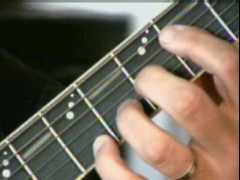
Don Mock:
Now let's practice some altered dom7th's in a progression. On the Jam
Track is a four chord turnaround. One bar of each: Gm7-C7-Fmaj7-D7.
Don Mock:
Use any version of Gm7 (or Gm9) you know in the 3rd fret area. On C7,
use the master position.
Play a form of Fmaj7 you like. For the D7,
slide the master position up 2 frets and do the exact same moves we did
for C7. This is the same track I used for the demo, as you play to the track, try different altered dominants for the C7 and D7.
For example, play them both with b9's the first time, then #9's the
next. Try as many different ones that you can.
Listen to the sound and pay special attention to the top notes in the chords.
The top notes in chords are the lead or melody note.
Listen to how the top notes work with each other.
When you feel comfortable with a few combinations, try multiple altered
chords in the same bar. Play C7#9 to C7b9 two beats apiece,
here's a tab example of that
LarryWjazz:
Don, are you playing Fmaj7 in the 5th postion?
Smitty:
Fmaj7 in first position..
LarryWjazz:
Both, alternating
Don Mock:
of the last tab Larry or both alternating, which are the best ones to us? It's up to you. Chord playing is an
improvised art form just like single-note soloing.
Now, let's move to the other master position. This positions works
exactly the same way, the basic C7 is a bit different, however, with the
root on the 6th string, 8th fret.
The b7th is on the 4th string, 8th fret and the 3rd is on the 3rd string 9th fret. Most voicing won't use
the 5th string, so you'll need to mute it.
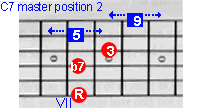
Don Mock:
This time the 5th is on the 2nd string, and the 9th is on the top string.
This position offers the same combinations, some easier than others to finger.
Here's some of the useful ones...
play C7#5 and C7b5,
remember guys, don't try to memorize these chords now,
just build them
AScriabin:
do you mute the A string, or just not play it?
Don Mock:
both AS,
muting is an important technique, especially if you're strumming,
I'll try to send you an example
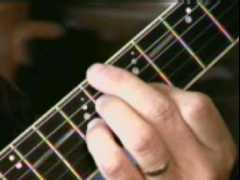
Don Mock:
here's C7b5, my second finger is slightly touching the A string, muting it
AScriabin:
muting is easier to do if you're playing the root and b7 with different fingers (as in the picture you just sent)
Don Mock:
however, if you're playing with your right hand fingers...
muting is not as much as an issue.
here's C7#5
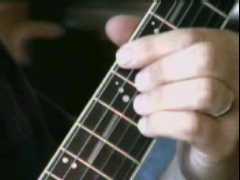
Don Mock:
and here's how I would probably play it most the time
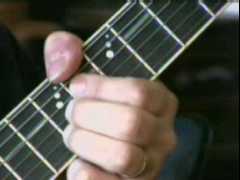
Don Mock:
You'll probably noticed that I use my left thumb to grab the bass notes in some chords.
Lot's of guys do this, but it's not necessary. You can
re-finger most of them using just fingers.
Or, just leave out the bass
notes. Sometimes, this is a perfectly acceptable alternative,
here are some more chords that are easy to play in master position 2
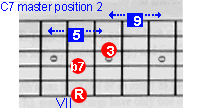
Don Mock:
play C7#5b9
LarryWjazz:
usually use my thimb for root in this one
Don Mock:
try C7#5#9
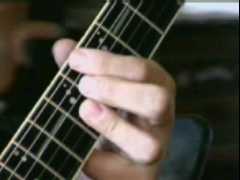
Don Mock:
use your thumb,
or 1st finger barre or leave out the root.
Try this master position for the C7 and D7 with the Jam Track,
I'll send you a live example of me jamming
Don Mock:
a live audio of me jamming to the same track you guys are playing
Ras-mel:
Most of the really hip sounds in a ii V I VI progression are coming from the two alt dom chords, ether as chord solos or single note solos
Don Mock:
your abosolutly right,
here's a jam track for the road, move the positions to E7
Don Mock:
The chords are; Bm7b5-E7- Am7,
any last questions before I say farewell
Ras-mel:
I think people want to hear how you play through alt dom sound because they already can hear the I chord as the rest sound
Don Mock:
do you mean single notes?
Ras-mel:
yes
Don Mock:
here you go
|
<< load notation from left
|